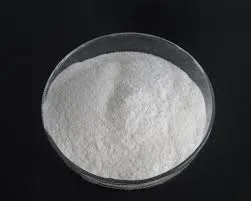
Sep . 06, 2024 14:12 Back to list
Hydroxyethyl Cellulose (HEC) - Ashland
Understanding Hydroxyethyl Cellulose from Ashland Properties and Applications
Hydroxyethyl Cellulose (HEC) is a non-ionic, water-soluble polymer derived from cellulose, and is produced by the reaction of ethylene oxide with cellulose in an alkaline environment. This polymer has found numerous applications across various industries due to its unique properties, such as thickening, binding, and film-forming capabilities. One of the leading manufacturers of HEC is Ashland Global Holdings Inc., which offers this versatile product for a wide range of applications.
Chemical Structure and Properties
HEC belongs to the family of cellulose ethers and is characterized by the presence of hydroxyethyl groups that enhance its solubility in water. This modification allows HEC to function effectively in aqueous systems while providing a stable and clear solution. Its viscosity can be adjusted by altering the concentration and molecular weight, giving formulators the flexibility to meet specific requirements for their applications.
One of the key properties of HEC is its ability to increase viscosity without significantly altering the clarity of solutions, which is beneficial in many formulations. Additionally, HEC exhibits excellent thermal stability and is resistant to a broad range of pH levels, making it suitable for various environments. This resilience helps maintain performance under different conditions, ensuring product reliability.
Applications in Various Industries
hydroxyethyl cellulose ashland

HEC has applications in numerous sectors, including personal care, pharmaceuticals, food, and construction. In the personal care industry, HEC is used as a thickening agent in lotions, shampoos, and gels. It enhances the texture and provides a desirable feel to the skin. Its ability to retain moisture also makes it a valuable ingredient in moisturizing products.
In pharmaceuticals, HEC is utilized as a binder and thickener in ointments and creams, contributing to product stability and efficacy. Its biocompatibility allows for safe use in a variety of formulations, including those intended for sensitive skin.
The food industry also benefits from HEC, where it functions as a stabilizer and thickener in sauces, salad dressings, and ice creams. Its role in preventing syneresis, or the separation of liquid from a gel, ensures product quality and consistency.
In construction, HEC is employed as an additive in cement-based materials, providing enhanced workability, improved adhesion, and prolonged open time. These properties are crucial for achieving high-quality results in various building applications.
Conclusion
Hydroxyethyl Cellulose from Ashland is a versatile and essential ingredient in many industries, thanks to its unique properties and adaptability. Whether for personal care, pharmaceuticals, food products, or construction materials, HEC plays a critical role in enhancing product performance and user experience. As industries continue to evolve, the demand for high-quality, multifunctional ingredients like HEC will remain strong, paving the way for further innovations and applications. Manufacturers and formulators who harness the properties of HEC will be well-positioned to develop effective solutions that cater to the needs of consumers across different markets.
-
Versatile Hpmc Uses in Different Industries
NewsJun.19,2025
-
Redispersible Powder's Role in Enhancing Durability of Construction Products
NewsJun.19,2025
-
Hydroxyethyl Cellulose Applications Driving Green Industrial Processes
NewsJun.19,2025
-
Exploring Different Redispersible Polymer Powder
NewsJun.19,2025
-
Choosing the Right Mortar Bonding Agent
NewsJun.19,2025
-
Applications and Significance of China Hpmc in Modern Industries
NewsJun.19,2025







